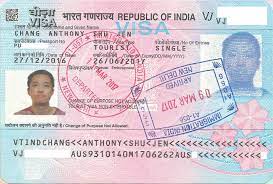India, a land of rich cultural heritage and diverse landscapes, attracts millions of visitors each year. However, before embarking on a journey to this vibrant nation, one must navigate through the intricate web of visa regulations. Understanding the types of Indian visa is crucial for travelers to ensure a smooth and hassle-free entry into the country.
- Tourist Visa: Unlocking India’s Treasures
The tourist visa is perhaps the most sought-after type, catering to individuals visiting India for recreational purposes, sightseeing, or casual visits to friends and family. Typically granted for a duration ranging from 30 days to 10 years, with multiple entries allowed, the tourist visa enables travelers to explore India’s majestic monuments, scenic landscapes, and diverse cultures.
- Business Visa: Navigating India’s Economic Landscape
For those seeking to engage in business activities such as meetings, conferences, or establishing business ties in India, the business visa is the gateway. This visa category facilitates short-term stays for business-related purposes and can be obtained for single or multiple entries. It is essential for visitors to adhere to the specific guidelines outlined for conducting business activities while on this visa.
- Employment Visa: Pursuing Professional Opportunities
The employment visa is tailored for individuals intending to work in India, whether it be for employment with an Indian company or as an expatriate employee of a multinational corporation. This visa necessitates sponsorship from the employing organization and is typically granted for a duration corresponding to the duration of the employment contract, with provisions for extensions. INDIAN VISA TYPES
- Student Visa: Enriching Academic Pursuits
Aspiring students from across the globe flock to India’s esteemed educational institutions, and the student visa facilitates their academic pursuits. This visa category mandates enrollment in a recognized educational institution and is granted for the duration of the academic course. Students are permitted to engage in part-time employment during their studies, subject to certain conditions.
- Medical Visa: Accessing India’s Healthcare Excellence
India has emerged as a premier destination for medical tourism, offering world-class healthcare services at competitive prices. The medical visa caters to individuals seeking medical treatment in India, accompanied by attendants if necessary. Applicants must provide documentation supporting their medical condition and treatment plan to obtain this visa.
- Conference Visa: Facilitating International Collaboration
For attendees of conferences, seminars, workshops, or similar events hosted in India, the conference visa is the appropriate choice. This visa allows entry for the specific duration of the event and may include provisions for pre-conference tours or post-conference travels. It is essential to furnish relevant documents, including invitation letters from the organizing bodies, to obtain this visa.
- Journalist Visa: Reporting from the Heart of India
Journalists, correspondents, and media personnel intending to report from India require a journalist visa. This visa category mandates adherence to specific guidelines governing journalistic activities in the country and may necessitate accreditation from the Press Information Bureau. Journalists must exercise caution to comply with local laws and regulations while operating in India.
- Research Visa: Exploring Academic Endeavors
Academic researchers, scholars, and individuals engaged in research collaborations with Indian institutions can apply for a research visa. This visa permits entry for the purpose of research, teaching, or pursuing academic endeavors and is typically granted for a specified duration. Applicants must provide documentation outlining their research objectives and affiliation with Indian institutions.
- Transit Visa: Brief Stopovers in India
For travelers transiting through Indian airports en route to their final destination, the transit visa serves as a brief permit for entry and stay within the transit area. This visa is applicable for short stopovers and does not permit travelers to exit the airport premises. It is essential to ensure that the transit visa aligns with the duration of the layover to avoid any complications.
Conclusion: Navigating India’s Visa Landscape
In conclusion, the diverse array of Indian visa types caters to the myriad needs of travelers, whether for leisure, business, education, healthcare, or research. Understanding the specific requirements and guidelines associated with each visa category is paramount to ensuring a seamless and enjoyable experience while visiting India. By acquainting oneself with the nuances of India’s visa regulations, travelers can embark on their journey with confidence and anticipation, ready to explore the wonders that this captivating country has to offer.

